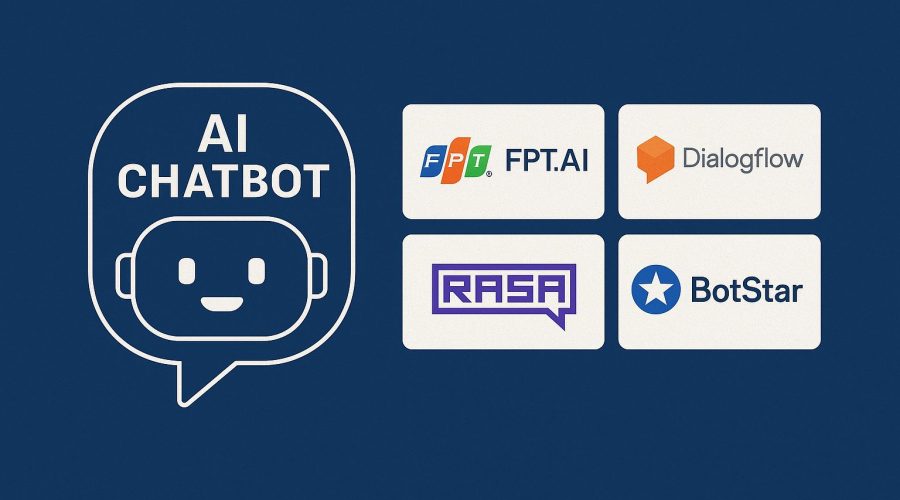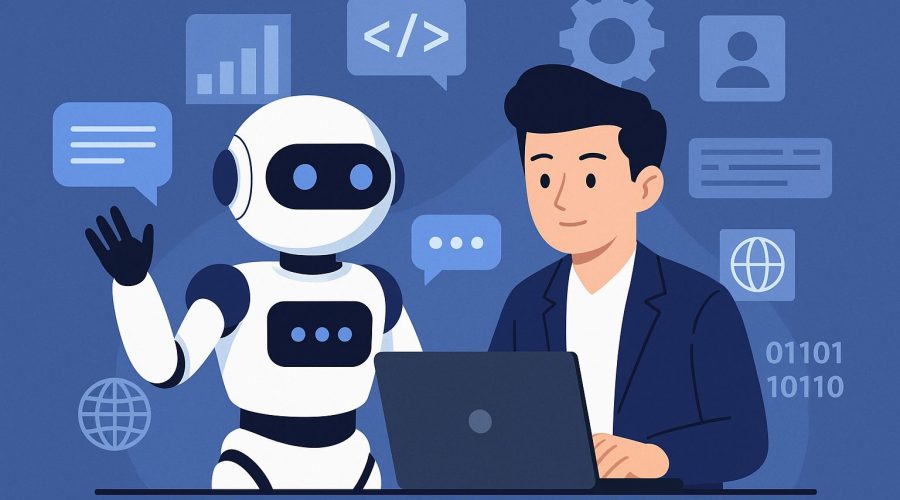Unlocking the Power of Chatbot Technology
In today’s fast-paced digital world, efficiency and instant communication are paramount. This is precisely why chatbot technology has become an indispensable tool for businesses and individuals alike. From answering quick queries to guiding complex transactions, these intelligent assistants are fundamentally changing how we engage with digital platforms. Understanding their capabilities is key to leveraging their immense potential.
Table of Contents
- What Exactly is Chatbot Technology?
- Exploring the Different Types of AI Chatbots
- Key Benefits of Integrating Chatbot Technology
- Where Chatbot Technology is Making a Significant Impact
- Implementing Chatbot Technology: A Practical Approach
- The Future Landscape of Chatbot Technology
What Exactly is Chatbot Technology?
At its core, chatbot technology refers to software applications designed to simulate human conversation through text or voice interactions. These programs are built to understand questions, interpret user intent, and provide relevant responses. Think of them as digital agents capable of engaging in a dialogue, often indistinguishable from talking to a person, especially for routine tasks.
Historically, chatbots were quite basic. They followed rigid rules and could only answer predefined questions. However, advancements in Artificial Intelligence (AI) and particularly in natural language processing (NLP) have transformed their capabilities. NLP allows chatbots to comprehend the nuances of human language, including slang, synonyms, and even sentiment. Furthermore, machine learning enables them to learn from past interactions, continuously improving their accuracy and conversational flow. As a result, modern chatbots are far more sophisticated, offering dynamic and personalized experiences.
The goal of this technology is not to replace human interaction entirely but to augment it. For instance, chatbots can handle repetitive tasks, freeing up human agents to focus on more complex or sensitive issues. This symbiotic relationship between humans and AI creates a more efficient and effective communication channel. Importantly, the development of robust datasets and algorithms is crucial for a chatbot’s success, ensuring it can understand a wide range of user inputs and respond appropriately.
Understanding user intent is a critical component of effective chatbot technology. It involves analyzing what the user is trying to achieve with their query. For example, if a user types “How much is an XYZ?” the chatbot needs to infer that they are asking for a price. This is achieved through complex algorithms that analyze keywords, sentence structure, and context. Moreover, context management allows chatbots to remember previous turns in a conversation, making interactions feel more fluid and natural. Without this ability, every query would be treated as a brand new conversation, leading to fragmented and frustrating experiences for the user.
Exploring the Different Types of AI Chatbots
While the term “chatbot” is often used broadly, there are primarily two main categories: rule-based chatbots and AI-powered (or conversational AI) chatbots. Each type operates on distinct principles and offers different levels of complexity and interaction. Understanding these differences is vital when considering the best fit for specific applications, whether it’s for customer service or internal automation.
Rule-based chatbots are the simpler of the two. They operate on a predefined set of rules, scripts, and keywords. Users are often presented with multiple-choice options or prompted to answer specific questions. If a user’s input doesn’t match a pre-programmed rule, the chatbot might struggle to respond, often redirecting the user to a human agent or stating it doesn’t understand. These are excellent for handling FAQs and structured queries where responses are predictable. For example, a restaurant chatbot might offer options like “View Menu,” “Make Reservation,” or “Find Location.” They are straightforward to build but lack the flexibility of more advanced systems.
On the other hand, AI chatbots, also known as conversational AI chatbots, are far more advanced. They leverage machine learning, natural language processing (NLP), and sometimes even deep learning to understand and respond to complex, free-form language. These chatbots learn from interactions and continuously improve their ability to interpret context, sentiment, and user intent. They can handle more nuanced conversations, providing a more human-like experience. For example, an AI chatbot for a bank could help with account balance inquiries, transaction history, or even guide users through loan applications by understanding natural language questions, not just keywords.
The power of conversational AI lies in its ability to adapt and evolve. These systems can process unstructured data, learn from vast amounts of text, and even generate creative responses. This makes them ideal for tasks requiring a deeper understanding of human communication, such as complex customer support scenarios or personalized sales interactions. Furthermore, the integration of voice recognition technology is propelling these chatbots into the realm of virtual assistants, making interactions even more intuitive and accessible for users across various platforms and devices.
Key Benefits of Integrating Chatbot Technology
Businesses are increasingly adopting chatbot technology due to the significant advantages it offers across various operations. These benefits range from enhancing customer experiences to driving operational efficiencies, ultimately impacting the bottom line. It’s not just about automating tasks; it’s about optimizing interactions and resource allocation effectively.
One of the most compelling benefits is enhanced customer service automation. Chatbots provide instant responses to common queries, 24/7, without requiring human intervention. This means customers can get answers to their questions at any time of day or night, improving satisfaction and reducing frustration from waiting. For instance, a customer support chatbot can handle FAQs, track orders, or provide basic troubleshooting, allowing human agents to focus on more complex, high-value issues that require empathy and critical thinking. This round-the-clock availability is a game-changer for global businesses with diverse customer bases in different time zones.
Moreover, chatbots significantly improve operational efficiency and reduce costs. By automating routine tasks that would otherwise consume a human agent’s time, businesses can reallocate their workforce to more strategic initiatives. This leads to substantial savings in labor costs over time. Furthermore, chatbots can handle a much larger volume of inquiries simultaneously compared to human agents, virtually eliminating wait times during peak periods. This scalability is crucial for businesses experiencing rapid growth or seasonal spikes in customer demand, ensuring consistent service quality.
Beyond customer service, chatbot technology offers powerful data collection and analysis capabilities. Every interaction with a chatbot can be logged and analyzed, providing valuable insights into customer behavior, common pain points, and emerging trends. This data can then inform product development, marketing strategies, and service improvements. For example, frequently asked questions can highlight gaps in product documentation, while common complaints can point to areas needing service refinement. Ultimately, this data-driven approach allows businesses to make more informed decisions and continuously optimize their offerings.
Where Chatbot Technology is Making a Significant Impact
The reach of chatbot technology extends far beyond basic customer service. Various industries are now leveraging these intelligent systems to streamline operations, enhance user experiences, and even generate new revenue streams. The adaptability of chatbots means they can be tailored to meet diverse industry-specific needs, demonstrating their versatility.
In the e-commerce sector, chatbots are transforming the online shopping experience. They can act as personal shopping assistants, guiding customers through product catalogs, offering personalized recommendations based on past purchases or browsing history, and even assisting with checkout processes. For example, a fashion retailer might use a chatbot to help a customer find a specific dress, recommend matching accessories, and answer questions about sizing or returns. This level of personalized engagement often leads to increased sales and improved customer loyalty. It simulates a one-on-one sales interaction but at scale.
Healthcare is another area where AI chatbots are making a profound difference. They can assist with appointment scheduling, provide answers to frequently asked medical questions, and even offer preliminary symptom assessments. While they cannot replace medical professionals, they can act as a first line of support, triaging patient inquiries and directing them to the appropriate resources. This reduces the burden on administrative staff and helps patients access information more quickly. For instance, a chatbot might remind patients about medication, or explain pre-procedure instructions, significantly improving patient engagement and adherence.
Furthermore, the finance and banking sectors utilize chatbots for secure and efficient customer interactions. These chatbots can help users check account balances, review transaction history, report lost cards, or even initiate loan applications. The emphasis here is on security and accuracy, ensuring sensitive financial information is handled with the utmost care. Many financial institutions employ conversational AI to provide instant support while adhering to strict regulatory compliance. Moreover, internal chatbots are increasingly used within companies for HR support, IT help desks, and general employee queries, boosting internal efficiency and employee satisfaction across departments.
Implementing Chatbot Technology: A Practical Approach
Successfully integrating chatbot technology into your operations requires careful planning and strategic execution. It’s not simply about deploying a piece of software; it’s about understanding your needs, choosing the right tools, and continuously optimizing the chatbot’s performance. A well-thought-out implementation process ensures maximum return on investment and a positive user experience.
The first step involves defining clear objectives. What do you want your chatbot to achieve? Are you aiming to reduce customer service calls, generate leads, or provide instant information? Identifying specific use cases and key performance indicators (KPIs) will guide the entire development process. For example, if the goal is to reduce call volume, you might track the percentage of queries resolved by the chatbot. Without clear objectives, it’s difficult to measure success or justify the investment.
Next, choose the right platform and development approach. There are various options available, from no-code chatbot builders to custom development frameworks. Your choice will depend on the complexity of your needs, your budget, and your technical resources. Many platforms offer pre-built templates and integrations that can significantly speed up deployment. Consider factors like scalability, integration capabilities with existing systems (e.g., CRM), and the platform’s ability to support advanced NLP features for your specific industry or use case. This decision lays the foundation for your chatbot’s capabilities.
Finally, continuous training and monitoring are crucial for the long-term success of any chatbot technology. Once deployed, a chatbot needs to be constantly refined based on real user interactions. Analyze conversation logs to identify areas where the chatbot struggles to understand user intent or provides unhelpful responses. Use this feedback to train the chatbot with new phrases, refine existing intents, and improve its overall accuracy. Regular updates to its knowledge base and algorithms ensure it remains relevant and effective. This iterative process of deployment, monitoring, and improvement ensures the chatbot evolves with your business needs and user expectations.
The Future Landscape of Chatbot Technology
The evolution of chatbot technology is far from over. As AI capabilities continue to advance, we can expect chatbots to become even more sophisticated, intuitive, and seamlessly integrated into our daily lives. The trends point towards more personalized, proactive, and multi-modal interactions, pushing the boundaries of what these digital assistants can do. This continuous innovation promises exciting possibilities for businesses and consumers alike.
One major trend is the rise of hyper-personalized interactions. Future chatbots will leverage vast amounts of user data, combined with advanced AI, to provide truly tailor-made experiences. Imagine a chatbot that not only remembers your past purchases but also anticipates your needs based on your emotional state detected through voice tone or facial expressions. This level of personalization will make interactions feel incredibly natural and efficient, blurring the lines between human and machine conversations. Furthermore, the integration with biometric data could lead to even more secure and user-friendly authentication processes, enhancing convenience and safety.
Another significant development is the increasing adoption of voice-enabled chatbots and virtual assistants. With the proliferation of smart speakers and voice interfaces, people are becoming more comfortable interacting with technology through spoken commands. Future chatbots will excel in understanding complex voice queries, handling multiple speakers, and even adapting to different accents and speech patterns. This shift towards conversational AI will make information and services more accessible to a wider audience, including those with disabilities, fostering greater inclusivity. The ability to seamlessly switch between text and voice will become a standard expectation.
Finally, ethical considerations and responsible AI development will become even more paramount. As chatbots become more powerful and integrated, ensuring transparency, fairness, and privacy will be critical. Developers and businesses will need to address issues like data security, algorithmic bias, and the clear distinction between human and AI interaction. The future of chatbot technology hinges not just on its technical prowess, but also on its ability to build trust and operate within clear ethical guidelines. Adhering to these principles will be essential for widespread adoption and positive societal impact. For more insights into ethical AI, visit Nokasoft Blog.
Ready to explore how chatbot technology can transform your business? Discover more insights and solutions on our blog!




